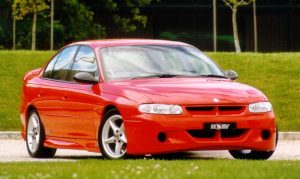Recalls: HSV VT XU8
Overview
Manufacturers, or importers, issue recalls for defects or faults which have the potential to cause injury. Generally, manufacturers will inform the original buyers if their vehicle is subject to a recall and of the steps required to remedy the defect or fault. Please note that the recalls below (if any) are for Australian-delivered vehicles only. Furthermore, the number of recalls should not be taken as an indication of a model’s reliability or its safety more generally.
Recalls: HSV VT XU8
- In March 1999, a recall was issued for HSV VT XU8 vehicles due to seats with unprotected wiring. As such, the seat cushion could deflect sufficiently to crush the wiring harness and expose bare wires to the motor bracket and create a short circuit; this could cause the wiring insulation to burn. The affected vehicles were numbered in the range L246596 to L259927 inclusive (PRA 1999/3845).
- In July 1999, a recall was issued for HSV VT Series II models manufactured between 27 May 1999 and 22 June 1999 due to final attaching torque not being achieved during assembly of the steering gear, rack-bar and inner ball joint housing. The recalled vehicles had serial numbers in the range L464495 to L473691 inclusive (PRA 1999/4007).
- In November 2000, a recall was issued for HSV VT Series I (VT.I) vehicles fitted with 5.0-litre V8 engines (code LB9). For these vehicles, the fuel feed hose may not have been manufactured to the correct specification – this could cause the hose to suffer thermal degradation, causing a fuel leak and potential fire hazard (PRA 2000/4550).
- In July 2001, a recall was issued for VT.II XU8 vehicles that were manufactured after June 1999. In these vehicles, an interruption of the electrical current to the fuel pump relay, fuel pump connectors and low-beam headlight relay could cause the fuel pump and low-beam lights to fail. To fix, the old relays (part number 92047112) were replaced with new relays (part number 92107897) (PRA 2001/4844).
Problems and faults: HSV VT XU8
Overview
This section identifies potential problems, causes and fixes based on the experiences of owners and repairers, online sources and technical service bulletins. This information is provided solely for reference purposes and AustralianCar.Reviews recommends that only properly qualified persons carry out repairs or modifications. Furthermore, the number of items below should not be taken as an indicator of a model’s reliability or the frequency with which they may occur.
To report a problem or fault to the AustralianCar.Reviews team, please use the Contact Us form. Note that AustralianCar.Reviews does not offer advice on automotive problems or disputes; such enquiries will not receive a reply. For vehicles purchased from dealers after 1 January 2011, please see our Australian Consumer Law fact sheet.
V8 Engines
- Reduced engine power and noisy valve train operation may be due to the metal plate that secures the aligning plates for the roller lifters breaking – this could cause damage to the lifters and cam lobes.
Automatic transmissions
- When driving at highway speeds, the transmission may downshift from fourth to third gear but would not subsequently engage fourth gear – this was due to transmission fluid loss and may require the O-rings in the gearbox to be replaced.
- A clunking noise when the gearshift is moved into park may require a revised transmission slider guide to be fitted (introduced in mid-1999).
Manual transmissions
- At the first use of the clutch pedal after a cold start, there may be a squealing noise which recurs when the clutch is disengaged – this may be due to incorrect fitment, damage or a lack of lubrication of the spigot bush.
- The tail shaft yoke that enters into the rear of the gearbox can cause oil leaks from the rear of the gearbox; a revised yoke was introduced in late 1998. Furthermore, a growling noise from the pedal area when the clutch is released may be due to the clutch pressure plate; a hydraulic damper was subsequently released to reduce this noise.
Problems and faults: HSV VT XU8
- Excessive rear inside tyre wear may require a rear camber kit to correct wheel angles. However, worn control arm bushes can also affect wheel alignment and tyre rear.
- Noises from the front suspension during low speed manoeuvres may be due to the rubber bushes on the front sway bar links having compressed or split.
- Grinding noises from the front wheels when cornering may be due to the ingress of small stones or dirt into the front strut upper support bearing; a foam dust seal was subsequently released to reduce this problem.
- The radius rod which joins the front lower control arm to the front of the engine cross member was susceptible to wear and the rubber could split. Furthermore, the bushes on the rear of the radius rod (in the lower control arm) could wear, move rearward during braking and cause a clunking noise.
- After long drives or high operating temperatures, there may be a clunking noise from the front of the vehicle that is also felt through the steering wheel when turning – this may be caused by excessive movement of the inner tie-rod end of the steering rack. A revised tie-rod was introduced in early 2001.
- Excessive free play in the steering wheel may be due to the upper bearing of the steering column failing; a revised bearing was introduced in 2001.
- The ABS warning light may illuminate due to the left front ABS sensor lead coming into contact with the sway bar link rod; a retaining clip was introduced in late 1999 to prevent this.



